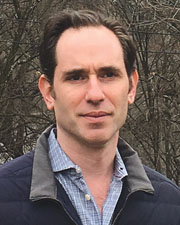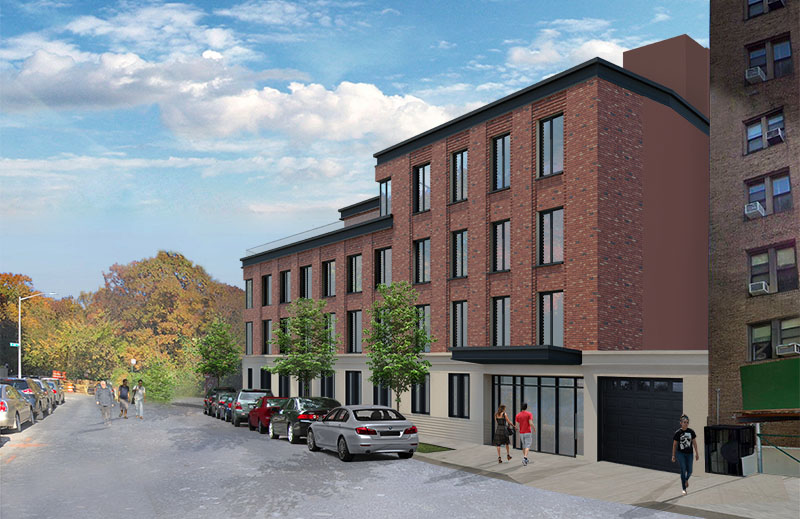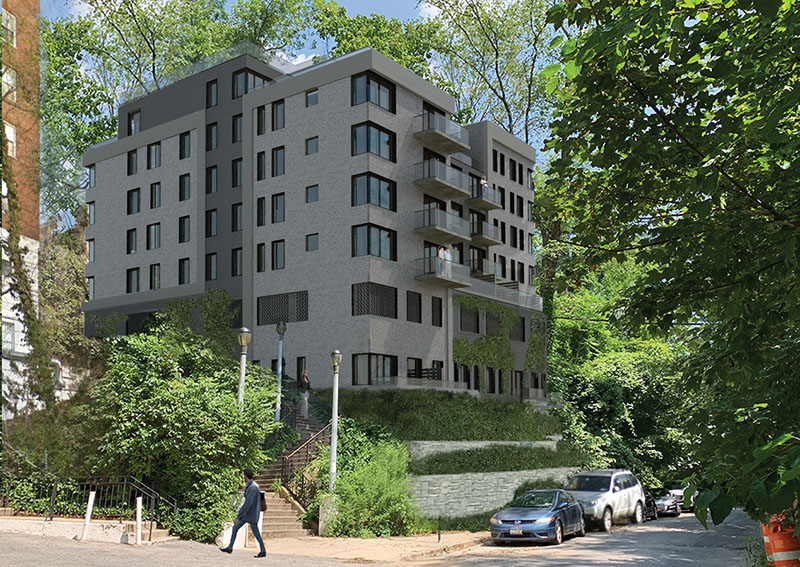
New York, NY The New York Real Estate Journal (NYREJ) recently sat down with Jeff Torkin, this month’s executive of the month. Torkin is a principal at Timber Equities, a NYC-based development firm with a current pipeline of residential projects in Upper Manhattan and the Northwest Bronx.
Torkin spent eight years at Extell Development Co. before joining Winter Properties as Head of Development in 2015. Two years later, he founded Timber Equities together with his partners, Mitch Perle and Joe Seidenfeld, and began acquiring properties for re-development.

NYREJ: What was the genesis of Timber Equities?
Torkin: I get this question often, particularly from colleagues in the industry looking to break out on their own – how do you start a development firm in New York City given the current market conditions?
First off, you need to really understand the residential development business. Many people think of “real estate” monolithically, without distinguishing between asset class or functional discipline. But New York City residential development is truly its own animal. I couldn’t have asked for a better introduction than my years at Extell, where I managed the development of some of the city’s most innovative projects, through the peaks and troughs of the market, while tackling every development issue imaginable. Gary [Barnett] is best in class in New York City and I was fortunate to have had a front row seat.
Meanwhile, a critical step in starting a new venture is establishing the right partnerships. The strength of my partnership with Mitch and Joe builds upon a deep expertise of the local market, as well as the success of our respective family real estate businesses – both in Toronto, Canada and here in New York – spanning multiple generations. We formed Timber as our newest platform to develop thoughtfully designed, high-quality housing opportunities with excellent access to both transit and local amenities.
The most important ingredient of Timber’s success, however, has been our ability to identify development sites of scale in excellent locations even in today’s competitive environment. The condo market has been overheated for quite some time, yet very few sites pencil as rentals. While we remain interested in investing in New York’s emerging neighborhoods, the greatest opportunities can sometimes be found in more traditional, often overlooked areas. For us, great sites in neighborhoods with strong fundamentals are by far the most compelling stories. Acquiring them takes discipline, thought and patience.
So, to summarize, many years in the trenches, a strong partnership and a very disciplined acquisition strategy are what got us off the ground.
NYREJ: What led you to pursue projects in Upper Manhattan and the Bronx?
Torkin: We are interested in rentals and particularly focused on the renter that is being priced out of Manhattan. There has been a steady northbound flow of renters into Upper Manhattan – Harlem, Washington Heights and Inwood – as well as into the Bronx – Mott Haven and Riverdale in particular.
Riverdale is really its own unique submarket with demographics much more akin to the Upper West Side. For generations, it’s been one of New York City’s finest neighborhoods and remains an incredible place to live and raise a family. There aren’t many development sites available given the zoning and topography, and our properties are arguably two of the neighborhood’s finest.
On the supply side, the argument for new rentals in Riverdale is even more compelling, with the existing housing stock comprised mostly of post-war co-ops and newer luxury condos. The rental vacancy rate in the local Community District was recently tallied at a mere 2.5%.
By coincidence, or perhaps by sheer fortune, I happen to reside in nearby Fieldston, quite proximate to both Riverdale sites. While my familiarity with the value drivers in the market certainly gave us a local advantage, we spent as much time diligencing these properties as any other in our portfolio.


NYREJ: What in particular made the Palisade Ave. and Waldo Ave. sites so interesting?
Torkin: Palisade Ave. is considered Riverdale’s “Gold Coast” with incredible views across the Harlem and Hudson rivers. 2395 Palisade, likely the last property to be developed on this stretch, is just steps away from the Spuyten Duyvil Metro North station, which offers a 24-minute commute into Grand Central Terminal. We’ve designed a boutique building – just 55 units – with light and air in all directions and with a great range of amenities that will make it the most desirable rental building in Riverdale.
Our Waldo Ave. site is located directly across from Manhattan College and overlooks beautiful Brust Park. Here we’re building a slightly smaller 29-unit rental building that includes a 10,000 s/f community space that can accommodate a variety of uses. Like Palisade, the residential units will feature plenty of light and air, along with an amazing view of both the park and college campus. The site is conveniently located just a five-minute walk to Riverdale’s main commercial stretch, Van Cortlandt Park and the 242nd St. subway station.
NYREJ: What are your views generally on the New York’s political and regulatory environment around real estate at the moment?
Torkin: We are very mindful of the severe housing crisis that the city is facing and applaud the efforts of mayor de Blasio to invest heavily in new affordable housing, whether through 421A or other HPD-backed programs. Having said that, we’re very concerned about the unintended consequences of the dramatic changes created by the Housing Stability and Tenant Protection Act (HSTPA) passed last spring.
It’s not surprising that certain politicians have found it expedient to demonize landlords and developers and blame them for the increasing costs of housing. However, a basic understanding of economics suggests that the creation of new housing is the only meaningful way to alleviate the current crisis. Unfortunately, legislation like this creates perverse incentives that often make things worse. Most landlords are now disincentivized from investing in their properties and have been cutting back on basic building maintenance. Other owners are warehousing vacant units to avoid the overbearing constraints of the new rules, only further reducing the housing supply. While the legislation was not particularly focused on new development projects, it’s also likely to drive both demand and rents for newly constructed properties…more unintended consequences.
NYREJ: How has the outbreak of the Coronavirus affected your outlook for 2020?
Torkin: Needless to say, we are currently in a period of increased stress and anxiety, and we look forward to more stable days. Although our sites are temporarily closed, Timber remains up and running, our projects are advancing, and we are preparing for the business challenges that may arise.
I have been very impressed by how quickly our consultants, contractors and the city agencies have responded to the crisis by establishing well-functioning virtual offices – just one example of the resilience of our fellow New Yorkers. Of course, with so many brick-and-mortar businesses on pause, the economy is feeling the immediate pinch, and many are, unfortunately, suffering. We do, however, remain cautiously optimistic, and expect that once the situation subsides, the marketplace will return with resounding force.
Developers tend to have a longer view of the market than most and at Timber we have complete confidence in the future of New York City. As such, we are expanding our portfolio, broadening our scale, and growing our team accordingly.
Our goal for 2020: To continue to deliver first-class assets throughout the city, while maintaining the discipline that has gotten us this far.
